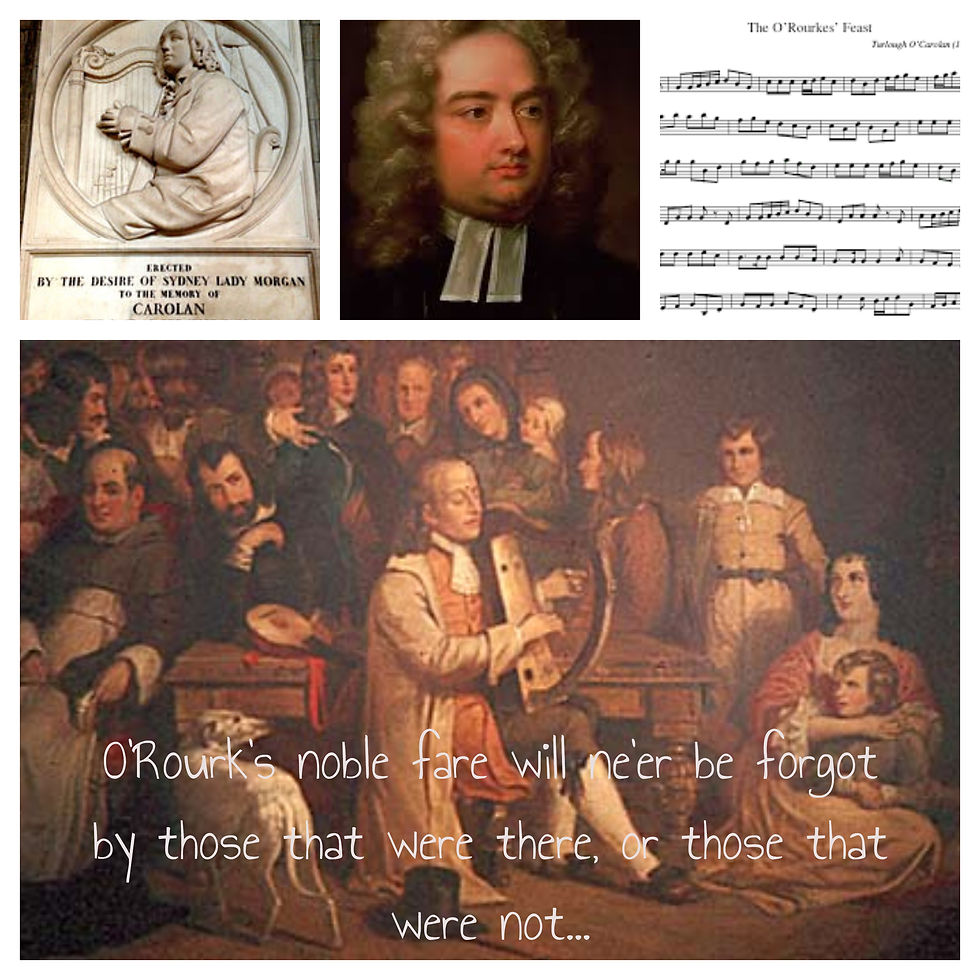Medieval Dublin!
- Austin Rock

- Oct 22, 2019
- 3 min read
Updated: Jan 20, 2020
"Where is the Castle? " - a common question when you take a group into Dublin Castle. Understandable, but if you carefully trace and show the group the castle it soon reveals itself like an elusive ghost. The upper yard apartments are the actual walls of the castle, while two towers remain to help sight the original Castle - the Records Tower and the Bermingham Towers. The beautiful Chapel Royal is actually outside the medieval castle wall. By the time the Chapel was built not an awful lot of the medieval castle remained, especially after a series of fires which progressed the process of upgrading the Crown Citadel from a Medieval castle to a modern seat of government. This process was started by Dublins most renowned and most decorated lord, the Duke of Ormonde - James Butler. Whether by an accident of his or his design, the fire seemed to present him with his desire and wish to upgrade the castle which he hated.
But parts of the outer walls do remain and present the visitor and local alike a great opportunity to reconnect with medieval Dublin. Ship Street, Lambe Alley, Cooke Street, Isolde's tower all provide anchor points to mark the old city. By taking a walking tour with Dublin Liberty Tours you will rediscover the buried elusive past.
Contact Austin @ 0876299356

The Gates of Hell, The King of Hell in Hell's Kingdom
Dorcas "Darkey" Kelly (died 7 January 1761) was an Irish brothel-keeper and alleged serial killer who was burned at the stake in Dublin in 1761. This woman's life casts a cold sliver of light on Ireland's dark age, the 18th century. Dorcas Kelly was a madam who ran the Maiden Tower brothel on Copper Alley, off Fishamble Street adjacent to Christchurch, Dublin. Convicted of the murder of a shoemaker John Dowling in 1760. Tried and executed in public by partial hanging and burning on Gallows road (corner of Mespil road and Baggot Street). However the real villains of this tale are the Luttrell's, who cast a dark shadow on 18th Century Dublin. Later legends grew up about Darkey, that she was a witch who had a child by Dublin's Sheriff, Simon Luttrell, 1st Earl of Carhampton, a member of the Hellfire Club based in the Eagle Tavern on Eustace Street. Other legends grew, that 5 corpses where found buried in her brothel, of witch craft practised by her. None of this appeared at her trial however. But a lot of the legends grew legs based on a long standing hatred of the Luttrell Family in Dublin by Irish Jacobites & Tories. Simon's father Henry, held as a traitor by Jacobites when he switched sides at the Battle of Aughrim in the 1690's. Year's later this odious man was dragged from his sedan chair on Dublin's Blind Quay Essex Quay) in 1717 and shot by Jacobite assassins. His skull in his crypt was smashed mysteriously. Simon his son, was described thus "His rakish behaviour earned him the nickname "King of Hell", "Hell" was a red light district in Dublin centred on Fishamble Street, it was notorious for its brothels. Near St Audeon's Gate which is also called "The Gates of Hell" so the King of Hell was the High Sherrif of Dublin and raked in kick back's from the Brothels, hence his clash Darkey Kelly whose execution led to three days of rioting in Dublin. Simon was known as the corrupter of courtesan Mary Nesbitt. He was ridiculed and reviled in the London Press thus "Fondly" remembered as "The Diaboliad, a poem dedicated to the worst man in His Majesty's dominions". His son Henry was also a notorious rat fllowing in the footsteps of his father and his grand father. He was accused of raping a young 12 year old called Mary Neal, to shut her up he had her family imprisoned until the accusation was withdrawn. His co-accused was another prostitute associate of Darkey's Maria Lewellin (Llewellyn). Luttrell sold up and fled the country to which this happened . The Dublin Post of 2 May 1811 announced his death in error, Henry demanded a retraction, which they obliged by printing under the headline "Public Disappointment" an understatement.
Blogging from Your Published Site
Did you know that you can blog right from your published website? After you publish your site, go to your website’s URL and login with your Wix account. There you can write and edit posts, manage comments, pin posts and more! Just click on the 3 dot icon ( ⠇) to see all the things you can do.







Comments